“The Carib Queen has never had any legal status under law… However, it is a title of tremendous significance within an indigenous culture in which women took care of their families and worked alongside their men—unlike other cultures where women were not treated equally.
“[…] European colonisation saw the indigenous peoples lose much of their identity and way of life—including their practices, languages and customs. But the role of the queen survived and is deeply embedded to the history of Arima and the Santa Rosa First Peoples.”
Julie Guyadeen pays tribute to late Carib Queen Jennifer Cassar, who passed away on 19 July 2018:

(Courtesy Julie Guyadeen)
The sudden death of Carib Queen Jennifer Cassar came as a thief in the night. Like everyone else in Trinbago, Mrs Cassar’s family and friends, as well as members of the Santa Rosa First Peoples community—for whom she held the position of Carib queen for almost seven years—and the community of Arima were shocked by her passing.
Trinidad and Tobago has lost a truly amazing cultural icon, whose ties ran deep; both in her community and the nation at large.
Born Jennifer Pile in Malabar, Arima, “Queen’s” maternal great-great-grandparents were of full Carib ancestry while her paternal grandmother had full Amerindian ancestry from Guyana. Her own mother was “half-Carib”.
She joined the local public service in 1971 and served this country for 40 years in the Ministries of Education, Community Development, Culture, Sports, Health and, finally, at the Judiciary. She also distinguished herself as a cultural activist for over 30 years, as a member of the National Carnival Commission’s (NCC) Regional Carnival Committee with responsibility for co-ordinating the National Stickfighting competitions.
Mrs Cassar, whose husband, Augustin Cassar, was a retired school principal and Cadet Force officer, was also a certified home health care worker. She was the mother of Vanessa Cassar-Blakely and John Cassar.
But, of course, her most memorable role was that of Carib Queen.

Arima has had six Carib Queens. They are: Delores MacDavid née Medrano (1875-1908), Maria Fuentes Werges Ojea (1908-1962), Edith Martinez née Werges (1962-1987), Justa Werges (1988-2000), Valentina “Mavis” Medina (2000-2011) and Jennifer Cassar née Pile (2011-2018).
The Carib Queen has never had any legal status under law, except for ceremonial religious purposes in the Roman Catholic Church and the community. However, it is a title of tremendous significance within an indigenous culture in which women took care of their families and worked alongside their men—unlike other cultures where women were not treated equally.
And although men traditionally held the leadership roles within the Carib community, women were expected to be the driving force in keeping its cultures and legacies alive. European colonisation saw the indigenous peoples lose much of their identity and way of life—including their practices, languages and customs. But the role of the queen survived and is deeply embedded to the history of Arima and the Santa Rosa First Peoples.
It is important to note that the word “Carib” is no longer used to mean a single tribe. It has since been conceptualised to refer to several groups of tribes under one banner, which is the first peoples of Trinidad and Tobago.

(Copyright Annalicia Caruth/Wired868)
As such, the Carib Community changed its name—under the Companies Act—to the Santa Rosa First Peoples Community, which is now registered as a not-for-profit organisation in keeping with changes in the national laws of Trinidad and Tobago and international standards recognised under the United Nations.
However, the term “Carib Queen” has not been changed and retains its initial purpose.
The first formally recognised queen, Mrs MacDavid, is renowned for leading the fight to revive and preserve a cultural legacy that she realised was flagging under colonisation. Her community called her “queen” out of respect.
The situational circumstances which inspired her, led to Mrs MacDavid becoming the first Carib Queen of her people.
It is important to note that, during this period, the Roman Catholic Church played a major role in the lives of indigenous people who were “christianised” from their “barbaric” ways.
Mrs MacDavid, who was not educated or schooled, was believed to have done a brilliant job in preserving her people’s customs by gaining favour with the Church.
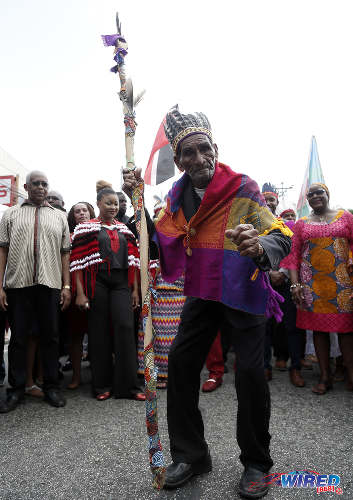
(Courtesy Annalicia Caruth/Wired868)
One tangible reward of this relationship was the RCC’s launch of The Feast of Santa Rosa or Santa Rosa de Lima Festival, which is significant as Saint Rosa is a key religious figure and the patron saint of the borough. It is now the oldest religious festival celebrated in Trinidad and Tobago; and this year marks its 232nd anniversary.
As the first Carib Queen, Mrs MacDavid held informal gatherings at her home or the homes of other members to pass the knowledge, culture, legacy and way of life to the younger generations, teach the younger women about their role in their families and discuss the community’s future plans.
In this era, indigenous peoples were often punished, tortured or even killed for taking part in such meetings, since the colonisers were concerned that they were planning to overthrow them. So, in a time before electricity and telephones, they met secretly at night.
It should also be noted that the Carib people’s last great leader, Chief Hyarima, was killed roughly a hundred years earlier, after leading several daring and successful raids on their Spanish overlords. Mrs MacDavid eventually stepped into that vacuum as Carib Queen; and it is a role that endured, with each woman leaving their own mark.
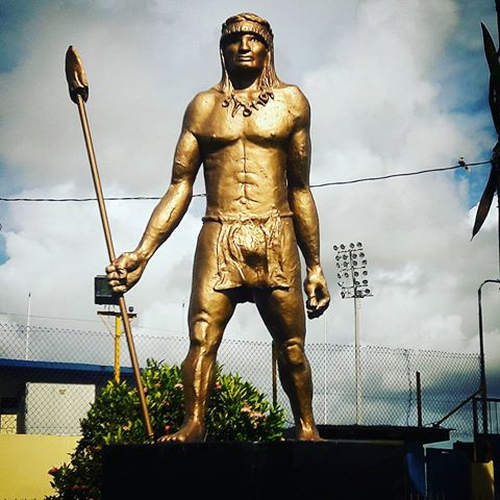
Neither title was official, of course. Slaves had no rights and the Spanish and British colonisers were not going to recognise any such distinctions. But it was a meaningful role within the Carib community.
Up until Chief Hyarima, the First Peoples were accustomed to a patriarchal leadership structure. Mrs MacDavid changed that forever.
One common factor between the first five Carib queens was that they were homemakers, who did not work outside of their households, the Church and their community. As a former pubic servant and cultural activist, Cassar was the first queen to hold a secular job.
So who was Jennifer Cassar?
For me, she was warmth, kindness, gentleness, beauty, wisdom and strength. She was firm but soft-spoken and she held her office with dignity and respect. You would never hear her shouting or talking down to anyone.
What you saw was what you got with her; she was articulate, she was clear and she treated others with respect. And, of course, she was very proud of her indigenous heritage.

(Courtesy Julie Guyadeen)
I interviewed Mrs Cassar about two months ago for my thesis paper in her capacity as Carib Queen. I never imagined that would be the last conversation I would have with her; and I am deeply saddened by her sudden passing and feel privileged to write this article on a woman whom I consider a maternal figure in my life—having lost my own mother just a few years ago.
This article is very emotional for me but I want to tell her story the way she deserves for it to be told.
For me, Mrs Cassar’s decision to become the first working queen outside of her home and community, is an important part of her legacy. In our interview, she told me that, before she accepted the position as Carib Queen, she discussed her multiple roles with her family and the impact they would have on them.
Her family understood the sacrifices that would have to be made but also knew the honour in being chosen to serve her people. And it did change her life.
Mrs Cassar was especially forceful in her outreach to youths, who she urged to feel proud of their heritage and get involved in community activities.
She would say: “Show up. Join the organisation. Come out and learn about who you are.”
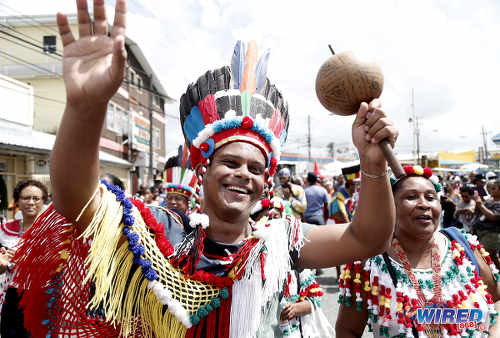
(Copyright Annalicia Caruth/Wired868)
There were also workshops within the community to teach the ways of our ancestors, through learning about basket weaving, arts, jewellery making, indigenous foods, and other areas. In addition, she encouraged younger members to take courses on native culture and supported those who wanted to study overseas or online.
Mrs Cassar represented the SRFPC at the 3rd Indigenous Leaders Summit of the Americas in Panama City in April 2009. In December of that year, she participated in a Seminar on the UN Declaration on the Rights of Indigenous Peoples for the Caribbean at the Hotel Marriott in Port of Spain.
On her Inauguration Day as Carib Queen, Mrs Cassar said—in the programme schedule—that “she wanted to fulfil one of [former Queen] Valentina Medina’s unfulfilled wishes of seeing a united flourishing indigenous community, by encouraging those that are of Carib ancestry to return to and become more fully involved in the Community, to further its development.”
I think she did all she could to make that a reality.
Whoever fills her shoes must implement their own vision for the community but also carry on the legacy of her predecessors. Leadership in our indigenous community means respecting the cultural knowledge and wisdom of our ancestors, whose legacies must be preserved for future generations. It is a daunting challenge in these changing times.
Mrs Cassar was a national icon; and, apart from being a great leader, she was also a wonderful wife, mother, friend, aunt and sister. She will be missed greatly.
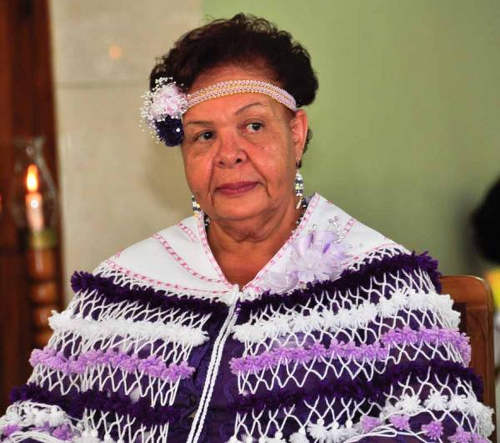
(Copyright News.gov.tt)
Julie Guyadeen has a BSc. in Government with a Minor in International Relations and Postgraduate training in International Relations both at the UWI St. Augustine Campus. She is a firm believer in civil society having an active voice.
 Wired868 Wired868 for smart sport news and opinion
Wired868 Wired868 for smart sport news and opinion
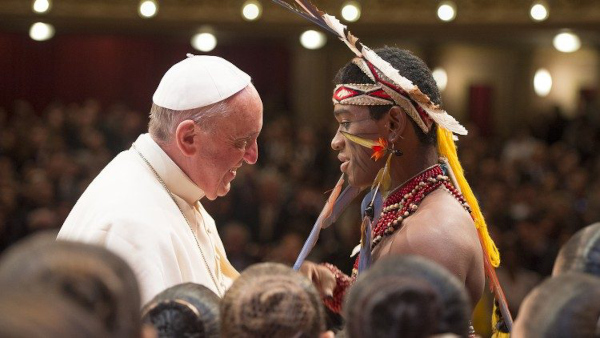
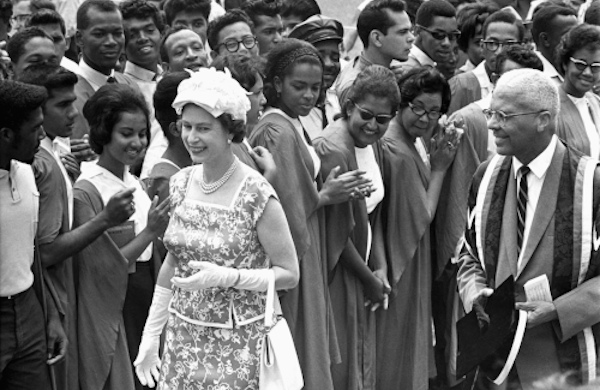





Condolences
Ms. Cassar was a wonderful person and so knowledgeable about the arts
Rip Jenny
Thanks
What a beautiful tribute, deftly balancing history, personal and communal accomplishments and sentimentality.
Excellent job Julie Jules